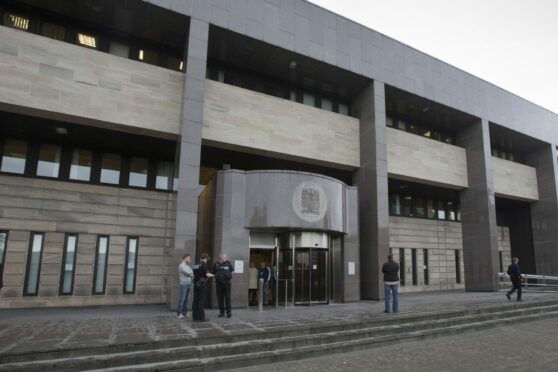Police Scotland were yesterday accused of “ignorance of the law” after they told council bosses a jury’s not proven verdict “implied a man was guilty”, even though he was cleared of the charges.
A letter was sent to Dundee City Council in the name of Chief Constable Iain Livingstone objecting to a man in the city being granted a taxi driver licence.
It set out his three minor criminal convictions dating back more than seven years, before listing a charge which was found not proven by a jury in 2017.
The letter said the not proven verdict, which acquits an accused person of a charge, implied the jury believed the man was guilty “albeit without formal conviction”.
Police Scotland said the letter was issued in the chief constable’s name but may not have been written by him and it was “sent in error”.
Senior legal figures blasted that interpretation, with one top QC saying the force “could not demonstrate a greater ignorance of the law”.
Brian McConnachie QC said: “I am astonished and concerned by the letter from the chief constable objecting to the grant of a taxi licence.
“The letter makes reference to an assault charge in respect of which the accused was acquitted by a not proven verdict.
“The letter explains why the matter has been referred to on the basis of a quite staggering misunderstanding of the not proven verdict.
“This is that not proven shows the jury believed that the accused was guilty but there was not enough evidence to convict.
“Juries are advised in every trial that there are three verdicts available to them: guilty, not guilty and not proven.
“The latter two verdicts are both verdicts of acquittal. Before a guilty verdict can be returned there must be at least eight people in favour of that verdict.
“If there is not a majority of the jury in favour of guilty then an acquittal must follow. Whether that is by not guilty or by not proven is a matter for them. Sometimes, although by no means always, they are advised that the distinction is a matter of emphasis.
“The idea postulated is a view one might get from someone with no experience or knowledge of the law. I would not expect it from Police Scotland.
“It has the prospect of influencing in a false way the views of the public, and also one wonders if this has been used in the past in other such applications.
“I consider the chief constable should ensure that this is corrected, and that those who lodge documents in his name are better informed.”
Another senior defence lawyer said holding a not proven verdict against someone is “abhorrent”.
The letter bears the signature of Chief Constable Iain Livingstone though it is understood that was applied electronically and it was sent in his name by a central administration department that deals with licensing.
It states the man is not a fit and proper person to be a taxi driver because of a charge of assault to severe injury and permanent disfigurement which was found to be not proven.
It adds: “Where not proven is the outcome in a case this shows the jury believed that the person in question is guilty of the offence, however there is an insufficiency of evidence to convict.
“It is the opinion of the Police Service of Scotland that this is pertinent to this application due to the serious nature of the offence and implication of guilty albeit without formal conviction.”
It is understood Dundee City Council’s licensing committee was given legal advice that Police Scotland’s interpretation of the verdict should be disregarded when making its decision.
The police divisional commander for Tayside, Andrew Todd, said: “This letter was unfortunately sent in error. A new one has already been issued which supersedes any previous correspondence.”
Verdict is cause of confusion: Miss M
Rape survivor Miss M, who is campaigning against the not proven verdict, said Police Scotland’s letter highlighted the confusion that exists.
The 24-old was raped when she was a student at St Andrews University and successfully sued Stephen Coxen after a jury found the allegation against him not proven.
When Coxen was cleared in the High Court in November 2015 she was told the result meant the jury believed her but there was not enough evidence to convict.
She said: “This is wrong and we need to stop saying this as it is leading to further confusion of the not proven verdict. We are asking members of the public to deliberate using a verdict they cannot understand.
“It is being discussed that Police Scotland has made a factually incorrect comment about the not proven verdict, but the harsh reality is that many organisations are doing the same.”
She said the uncertainty among the general population was reflected in juries charged with making judgments and upholding the law.
“Nevertheless, the legal implications of not proven are the same as not guilty and the accused is acquitted and innocent in the eyes of the law,” she said.
“In amongst the uncertainty what we know for sure is that not proven is most commonly used in cases of rape and sexual violence.”
Miss M, who maintains her right to anonymity as she campaigns with Rape Crisis Scotland, recently met Justice Secretary Humza Yousaf and said he confirmed there was no “set in stone” definition of the not-proven verdict.










